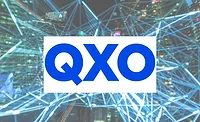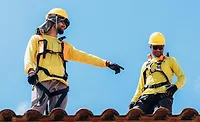Safety and Technology
AI is Changing how to Manage Roofing Crews Safely
AI is here and roofing contractors can use it to enhance safety, communication and risk management on projects of all scopes and sizes.
.webp?t=1744056554)
Mediteraneo - stock.adobe.com. Photo provided by Arcoro.
Managing a roofing crew of two or three workers won’t send most supervisors into a cold sweat. But what about a crew of 20 or 30? And what if your job site isn’t a 30,000-square-foot office building but a 300,000-square-foot manufacturing facility?
The larger the job, the more challenging it is to manage.
Artificial intelligence brings a dynamic edge to crew management in the field. Roofing contractors can use AI-powered tools to enhance safety, communication and risk management on projects of all scopes and sizes.
Quicker Communication
It’s difficult to efficiently disseminate new information when crews are spread across a job site or 50 feet above ground level. Sending an alert or text message is much faster than braving the chaos of an active job site to track down every roofer and helper. But there’s still time lost in the act of crafting the message.
Supervisors can use generative AI to write effective messages quickly, such as telling workers to start waterproofing because the latest radar update shows a rain cloud unexpectedly heading their way. They can also use AI to instantly translate messages so individual employees receive important notifications in their preferred language.
Safety Alerts
Roofers face daily safety hazards, including climbing ladders, carrying heavy materials, and walking across steep, sometimes slippery surfaces. While all workers should be up-to-date with their safety training and certifications, overcommunication is never a bad idea when it comes to preventing accidents and enhancing worker safety.
Contractors can enhance safety measures by sending automated safety reminders, documents or videos. AI can analyze project details and scheduled tasks to customize alerts for the specific job site and workforce. These alerts may include:
- How to properly don your safety harness and use your fall protection system
- Best practices for controlling hazard exposure, such as asbestos, lead and silica
- Safety tips for contractors performing hot work on torch-down roofing systems
- Procedures for identifying and avoiding electrical hazards, such as power lines near the roof
- Guidelines for preventing heat stress during peak summer temperatures
Optimized Workforce
When done manually, resource allocation and shift management are more akin to an art than a data-backed process. Project managers need to meticulously balance their labor availability against budget constraints and completion dates. Additionally, they need a deep understanding of their team’s qualifications and experience levels to schedule workers on the projects where they will be most impactful.
Workforce management tools with AI-enabled capabilities can significantly reduce the time it takes to create and optimize work schedules. For instance, on a TPO roof job with a tight deadline, AI can help analyze historical project data to determine which individuals have recently worked on projects with similar requirements and are likely to make construction schedules more efficient.
AI-powered tools can also help actively monitor employee certifications and training records to ensure everyone on the job site is up-to-date with the latest safety requirements, which translates to a safer work environment.
Predictive Analytics
One of AI’s biggest advantages in coming years will be the ability to convert job site data into meaningful business intelligence. Supervisors will soon be able to use AI to instantly compile insights from workforce management systems that help them proactively address job site risks before they snowball into greater issues — or deadly ones.
An AI-powered system can compare real-time and historical data to identify trends that indicate increased risk for safety incidents. For example, do jobs of a certain size experience greater rates of near-misses than other projects? Based on the data, should we increase our crew size to help reduce worker fatigue and accident risk? Which individuals are repeatedly involved in safety incidents? Could we improve safety measures by offering additional training workshops?
The possibilities with AI?
AI is the next frontier of construction workforce management technology — and its impact will be felt in every nook and cranny of the sector. Roofing contractors can derive new value from the data they already have at their fingertips to make better, dynamic decisions about their projects and workforce, ensuring safer job sites, more productive teams and more profitable enterprises.
Looking for a reprint of this article?
From high-res PDFs to custom plaques, order your copy today!




.webp?height=200&t=1744056554&width=200)



